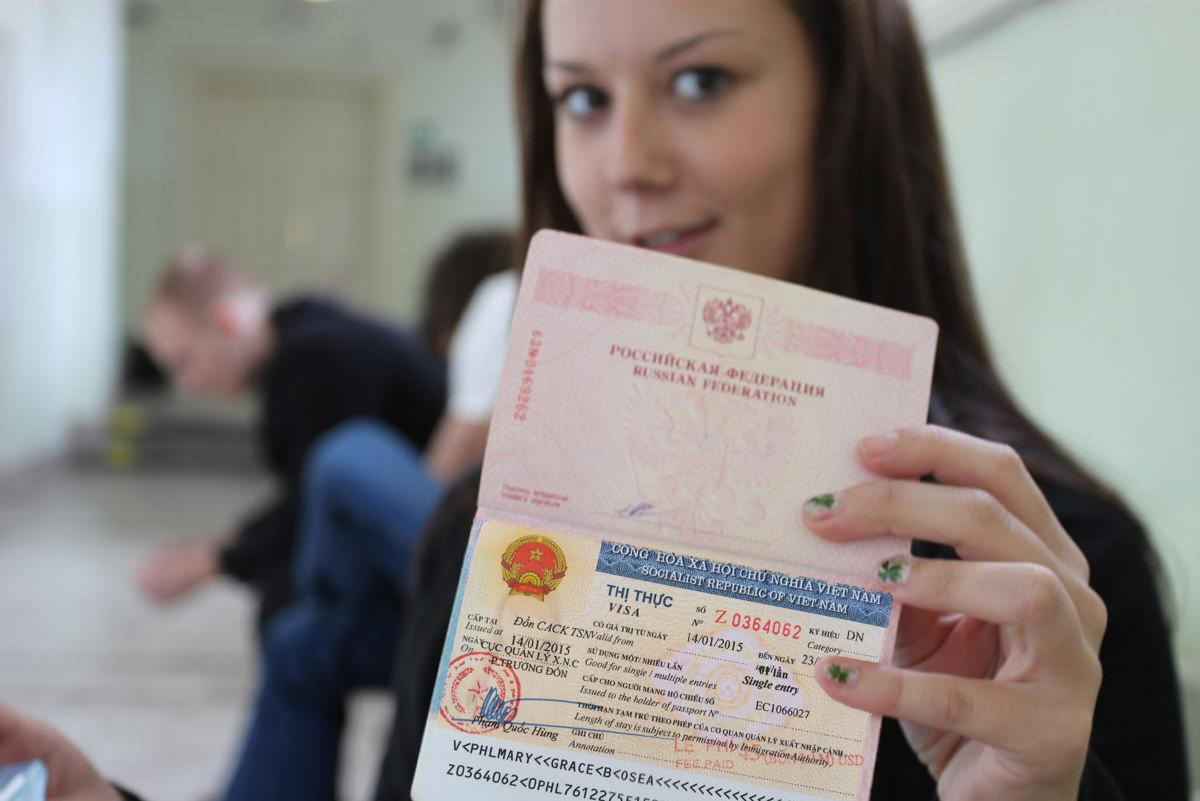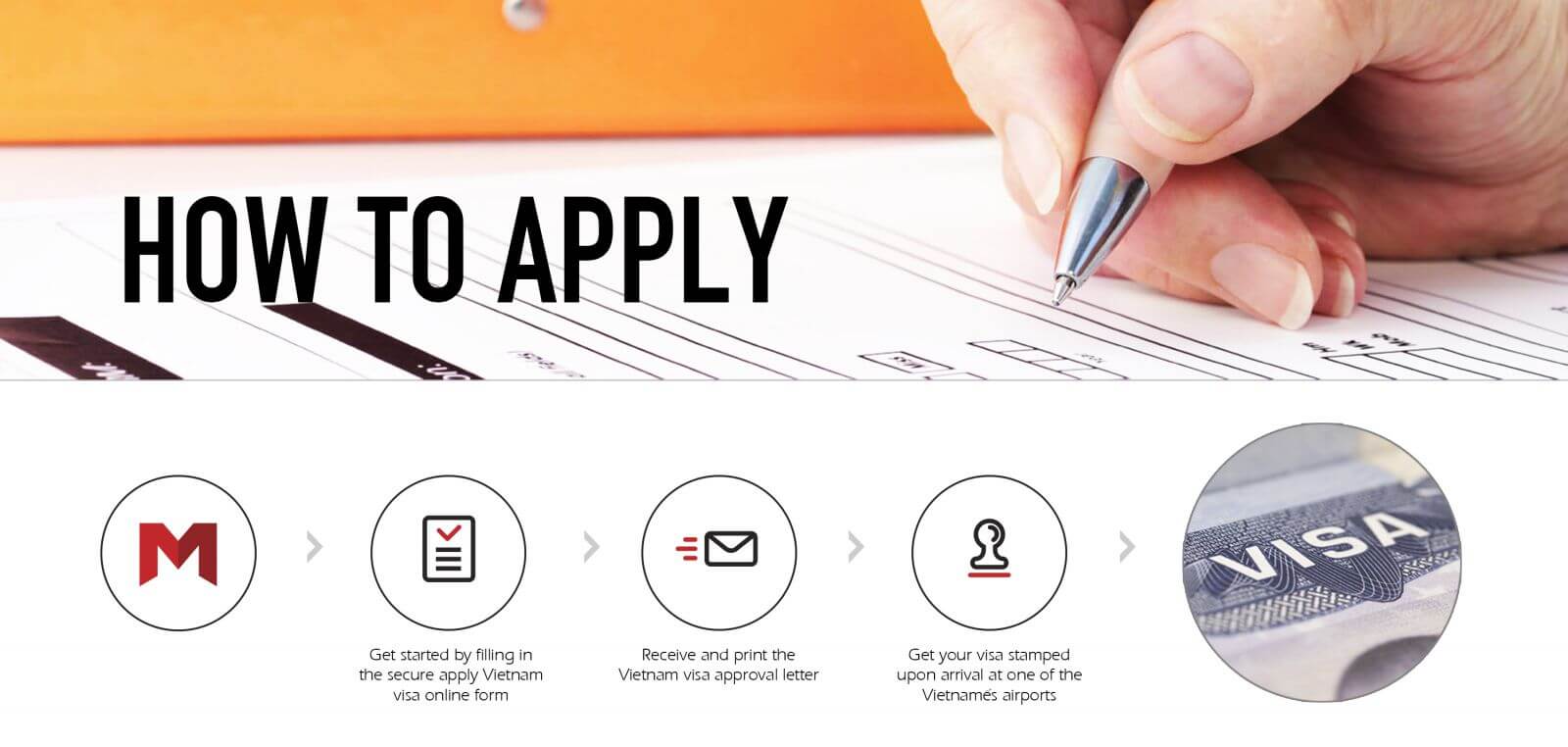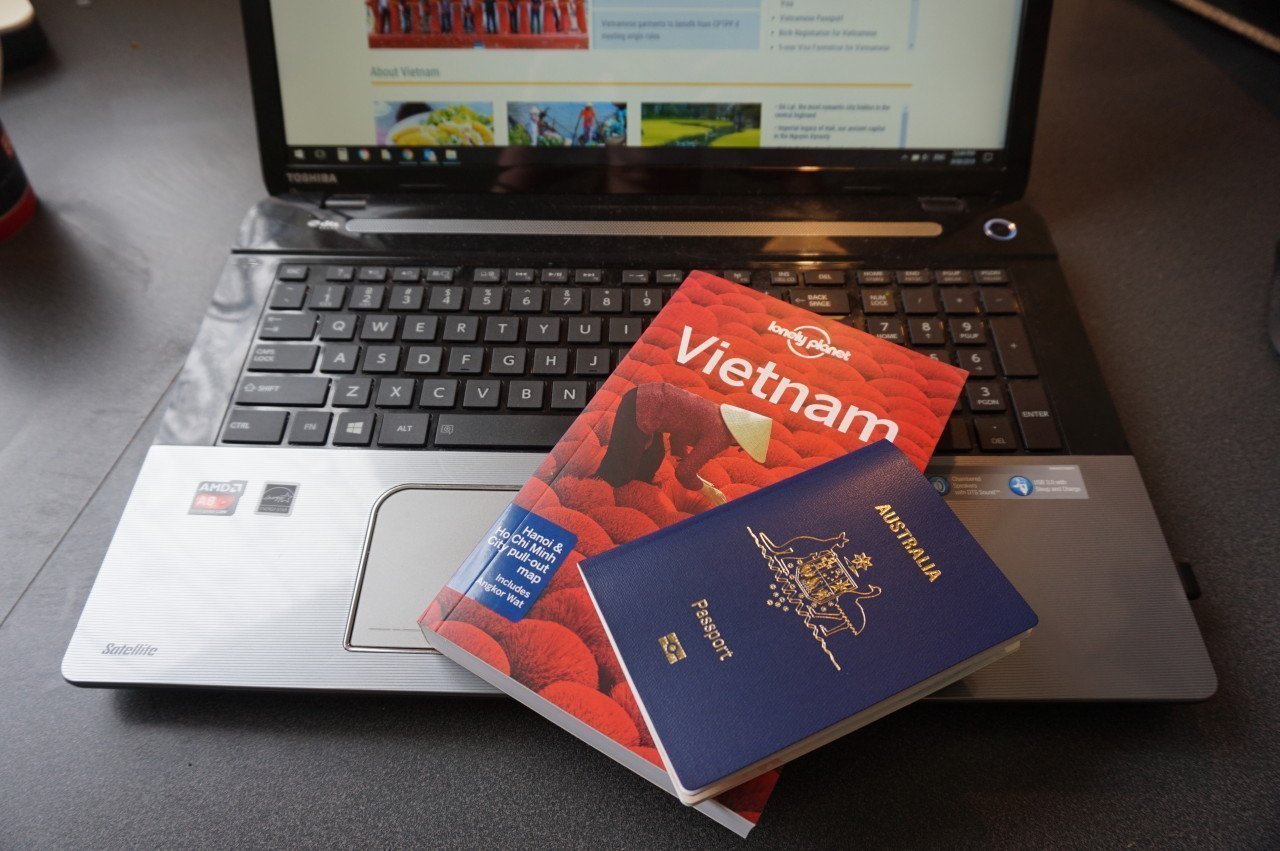Learn about the requirements, benefits, costs, processing time, and validity period of a Vietnam E-visa. Find out how to apply for an E-visa online, common mistakes to avoid, and tips for a smooth entry into Vietnam. Compare a Vietnam E-visa with traditional visa options.

Vietnam E-visa: What is it and how does it work?
Vietnam E-visa is an electronic visa system that allows foreign travelers to apply for and obtain a visa online before traveling to Vietnam. The E-visa is valid for a single entry visit of up to 30 days and can be used for tourism, business, medical treatment, or visiting relatives.
To apply for a Vietnam E-visa, travelers need to visit the official website of the Vietnam Immigration Department and fill out the online application form with their personal details, passport information, and travel itinerary. They also need to upload a digital photo of themselves and a scanned copy of their passport’s biographical page.
After submitting the application and paying the visa fee, the processing time takes up to three working days. Once approved, the E-visa will be sent via email in PDF format, which travelers can print out and present to the immigration officers upon arrival at Vietnam’s airports or land border crossings.
It’s important to note that not all countries are eligible for the Vietnam E-visa, and some nationalities may still be required to apply for a visa through the traditional method at Vietnam’s embassy or consulate. Travelers are advised to check the eligibility criteria and other requirements before applying for a Vietnam E-visa.
The requirements for obtaining a Vietnam E-visa

The requirements for obtaining a Vietnam E-visa are as follows:
- Eligibility: Citizens of certain countries are eligible for the Vietnam E-visa. The list of eligible countries can be found on the Vietnamese government’s website.
- Valid passport: Applicants must have a valid passport with at least six months of validity from the date of entry into Vietnam.
- Digital photo: A digital photo of the applicant’s face must be submitted with the application. The photo should be recent, clear, and in color.
- Application form: Applicants must complete an online application form, providing personal information such as name, address, and travel details.
- Payment: A non-refundable fee is required to process the E-visa application. Payment can be made online using a credit card or debit card.
- Processing time: The processing time for an E-visa is usually three business days. However, it may take longer during peak travel periods.
- Print the E-visa: Once the E-visa is approved, applicants must print a copy of the E-visa and carry it with them when traveling to Vietnam.
It is important to note that the Vietnam E-visa is only valid for single-entry visits with a maximum stay of 30 days. If you plan to stay in Vietnam for more than 30 days or require multiple entries, you will need to apply for a different type of visa.
Benefits of getting a Vietnam E-visa

The Vietnam E-visa is an online electronic visa that allows visitors to enter Vietnam for tourism, business, study or other purposes. Here are some of the benefits of getting a Vietnam E-visa:
- Convenience: The entire process of applying for a Vietnam E-visa can be done from the comfort of your home or office. You don’t have to go to the embassy or consulate to apply for a visa.
- Time-saving: With an E-visa, you can avoid long wait times at the airport or border checkpoints. You can save time by not having to fill out paperwork and stand in line for a visa on arrival.
- Cost-effective: The cost of a Vietnam E-visa is much lower than other types of visas, such as visa on arrival or traditional paper visas. This makes it a cost-effective option for travelers.
- Validity: A Vietnam E-visa is valid for 30 days from the date of entry, which gives visitors ample time to explore the country and its attractions.
- Multiple entries: An E-visa also allows multiple entries into Vietnam during its validity period. This means that you can leave and re-enter Vietnam multiple times without having to apply for a new visa.
Overall, the Vietnam E-visa is a convenient, time-saving, cost-effective option for travelers who want to visit Vietnam. It offers various benefits that make it an attractive choice for those planning a trip to this beautiful country.
How to apply for a Vietnam E-visa online
- Visit the official Vietnam E-visa website.
- Start your application: Click on the “Apply for E-visa” button and select your nationality, passport-type, and visa type.
- Fill out the application form: Enter your personal information, travel details, and contact information.
- Upload your supporting documents: This includes a scanned copy of your passport data page and a recent passport photo.
- Pay the visa fee: The visa fee can be paid online using a credit or debit card.
- Submit your application: Once you have completed all of the steps above, click on the “Submit” button.
Processing time
The processing time for Vietnam E-visas is typically 1-3 business days. You will receive an email notification once your application has been processed.
Printing your E-visa
Once your E-visa has been approved, you will be able to download and print it. You will need to present your printed E-visa to the immigration officer when you arrive in Vietnam.

Processing time for a Vietnam E-visa
The processing time for a Vietnam E-visa is normally 3 working days. However, the processing time may be longer due to the large number of applicants or public holidays. As such, it is highly recommended to start your application for an E-visa to Vietnam 1-2 weeks before departure.
Factors that can affect processing time
There are a number of factors that can affect the processing time for a Vietnam E-visa, including:
- The number of applicants: The processing time for an E-visa is typically longer during peak travel seasons, such as summer and winter holidays.
- Public holidays: The processing time for an E-visa may be longer during Vietnamese public holidays.
- Incomplete or inaccurate information: If your application is incomplete or inaccurate, it may take longer to process.
- Technical difficulties: Technical difficulties on the part of the Vietnamese government may also delay the processing of your E-visa application.
The validity period of a Vietnam E-visa
A Vietnam E-visa is an electronic visa that allows foreign citizens to enter Vietnam. E-visas are valid for a maximum of 90 days, and can be either single or multiple entry. This means that you can stay in Vietnam for up to 90 days on a single E-visa, and you can enter and exit Vietnam multiple times during that period.
The validity period of an E-visa starts on the date of issue, which is the date that the E-visa is approved by the Vietnam Immigration Department. You must enter Vietnam before the E-visa expires, or you will need to apply for a new one.
To apply for an E-visa, you will need to provide your passport information, travel details, and a photo. You can apply for an E-visa online through the Vietnam Immigration Department’s website. The processing time for E-visa applications is typically 3-5 business days.
Here is a table summarizing the validity period of a Vietnam E-visa:
| Type of E-visa | Validity period | Entry type |
|---|---|---|
| Single entry E-visa | 30 or 90 days | Single entry |
| Multiple entry E-visa | 30 or 90 days | Multiple entry |
Please note that the information in this explanation is for general guidance only. You should always check the latest information with the Vietnam Immigration Department before applying for an E-visa.
Costs associated with obtaining a Vietnam E-visa
Application Fees:
The Government of Vietnam charges a non-refundable application fee for all E-visa applications. The fee is as follows:
- Single-entry E-visa: $25 USD
- Multiple-entry E-visa: $50 USD
Additional Fees:
In addition to the Government application fee, there may be additional fees associated with obtaining an E-visa. These fees can vary depending on the service provider you use and the additional services you request. Some common additional fees include:
- Processing fees: These fees are charged by the service provider for processing your application and ensuring that it is complete and accurate.
- Express processing fees: If you need your E-visa processed quickly, you may be able to pay an express processing fee. This will typically reduce the processing time to 24 hours or less.
- Courier fees: If you need your E-visa delivered to you by courier, you will need to pay a courier fee.
Total Costs:
The total cost of obtaining a Vietnam E-visa will vary depending on the factors mentioned above. However, as a general guideline, you can expect to pay between $25 and $100 USD for a single-entry E-visa, and between $50 and $150 USD for a multiple-entry E-visa.
Payment Methods:
The Government application fee can be paid using a credit card or debit card. Additional fees may also be paid using a credit card or debit card, or by bank transfer.
Processing Times:
The processing time for E-visa applications typically takes 3-5 working days. However, if you pay an express processing fee, your application may be processed in as little as 24 hours.
Tips:
- To avoid any delays, it is recommended to apply for your E-visa at least two weeks in advance of your travel date.
- Make sure that you have all of the required documents before you start your application.
- Review your application carefully before submitting it to ensure that all of the information is correct.
Common mistakes to avoid when applying for a Vietnam E-visa
When applying for a Vietnam E-visa, it’s important to avoid certain common mistakes to ensure a smooth and successful application process. Here are some key points to keep in mind:
- Incomplete or incorrect information: Double-check your personal details, including passport number, name, date of birth, and other required information. Any discrepancies or missing information can lead to delays or even rejection of your application.
- Insufficient validity on passport: Ensure that your passport has at least six months of validity remaining from the date of entry into Vietnam. If your passport is close to expiring, renew it before submitting your visa application.
- Uploading incorrect documents: Review the specific document requirements for the Vietnam E-visa application carefully. Make sure you upload the correct files in the accepted formats (usually PDF or JPEG). Failure to provide the necessary documents or submitting incorrect ones can result in rejection.
- Payment errors: When making the payment for your E-visa, be careful to enter the correct payment details and ensure sufficient funds are available. Double-check the payment process to avoid any mistakes that could lead to delays or rejection.
- Applying too early or too late: Apply for your Vietnam E-visa within the recommended time frame, which is usually 30 days prior to your intended arrival. Applying too early may result in an expired visa when you travel, while applying too late may not allow sufficient processing time.
- Ignoring the entry/exit ports: During the application process, you will need to select the specific entry and exit ports you plan to use in Vietnam. Be sure to choose the correct options based on your travel itinerary to avoid any complications upon arrival.
- Neglecting to check application status: After submitting your application, regularly check the status of your Vietnam E-visa. This will help you stay informed about any updates, requests for additional information, or approval/rejection notifications.
By avoiding these common mistakes, you can increase the chances of a smooth and successful Vietnam E-visa application process. It’s always recommended to carefully read and follow the instructions provided on the official visa application website or consult with relevant authorities for the most up-to-date information.
Tips for a smooth entry into Vietnam with an E-visa
Tips for a smooth entry into Vietnam with an E-visa:
- Complete the application accurately: Ensure that all information provided in your E-visa application is accurate and matches your passport details. Any discrepancies can cause delays or even denial of entry.
- Check validity and restrictions: Verify that your E-visa is valid for your intended travel dates and allows for the purpose of your visit (e.g., tourism, business). Different types of visas have varying conditions, so make sure you meet the requirements.
- Print your E-visa confirmation: Although it’s an electronic visa, having a printed copy of your E-visa confirmation is advisable. This can be useful in case of any technical issues or if immigration authorities request physical documentation.
- Carry additional documents: Along with your E-visa, carry other important documents such as your passport (valid for at least six months beyond your intended stay), return tickets, hotel reservations, and sufficient funds to cover your expenses during the trip.
- Respect local customs and regulations: Observe and respect Vietnamese customs and laws during your stay. Familiarize yourself with the basic do’s and don’ts to ensure a trouble-free experience.
- Have contact information readily available: Keep the contact details of your embassy or consulate in Vietnam handy. In case of emergencies or unexpected situations, they can provide guidance and assistance.
- Prepare for immigration procedures: Upon arrival, follow the signs to the immigration area and present your passport with the E-visa confirmation to the immigration officer. Answer any questions truthfully and cooperate throughout the process.
- Maintain necessary financial means: Ensure you have enough money or access to funds to sustain your visit, as immigration officers may inquire about your financial situation. It’s a good practice to carry some local currency (Vietnamese Dong) or a valid international credit card.
- Stay informed about entry requirements: Immigration policies and procedures may change, so stay updated with any new regulations or requirements before you travel. Websites of official Vietnamese government agencies or your local embassy can provide reliable information.
Remember, these tips aim to provide general guidance, and it’s always wise to consult official sources or seek advice from the relevant authorities regarding entry into Vietnam with an E-visa.
Comparison between a Vietnam E-visa and traditional visa options
A Vietnam E-visa and traditional visa options can be compared based on their application process, validity, entry requirements, and availability.
Application Process:
- Vietnam E-visa: The E-visa application is completed online, requiring the applicant to fill out an electronic form with personal details, and travel information, and upload necessary documents.
- Traditional Visa: Traditional visa applications typically involve visiting a Vietnamese embassy or consulate in person, submitting a paper application form, providing supporting documents, and paying the required fees.
Validity:
- Vietnam E-visa: E-visas are usually valid for a single entry and allow a maximum stay of 30 days. Extension options may vary.
- Traditional Visa: Traditional visas offer more flexibility in terms of validity and entry options. They can be issued for various durations, such as 1 month, 3 months, or longer, with multiple entries permitted.
Entry Requirements:
- Vietnam E-visa: E-visas are available for citizens of eligible countries and require a valid passport, a digital photo, and payment of the visa fee.
- Traditional Visa: Traditional visas also require a valid passport, completed application forms, passport-sized photos, supporting documents (such as invitation letters or flight itineraries), and payment of applicable fees.
Availability:
- Vietnam E-visa: E-visas are available for citizens of certain countries, which may vary over time. It’s essential to check the official Vietnamese government website for the latest eligibility information.
- Traditional Visa: Traditional visas are generally available for most nationalities through Vietnamese embassies or consulates worldwide.
Which Option is Right for You?
The best visa option for you will depend on your nationality, purpose of travel, and itinerary. If you are eligible for the E-visa and are planning a short trip to Vietnam for tourism purposes, then the E-visa is a convenient and cost-effective option. However, if you are not eligible for the E-visa or are planning a longer trip to Vietnam for business or other purposes, then you will need to apply for a traditional visa option.
Here is a table summarizing the key differences between the E-visa and traditional visa options:
| Feature | E-visa | Traditional Visa Options |
|---|---|---|
| Application Process | Online | In person |
| Processing Time | 3 business days | Varies |
| Validity | Single entry, up to 30 days | Varies |
| Cost | Less expensive | More expensive |
It is important to note that the information provided here is general and for informational purposes only. Travelers should always check with the Vietnam Immigration Department or a Vietnamese embassy or consulate for the most up-to-date information on visa requirements and procedures.
Vietnam E-visa Q&As
How long does it take to process an E-visa application?
E-visa applications are usually processed within 3 working days. However, it is advisable to apply for your E-visa at least 10 days before your planned travel date.
How much does an E-visa cost?
The cost of an E-visa depends on your nationality and the type of visa you are applying for. Single-entry E-visas cost between $25 and $50, while multiple-entry E-visas cost between $50 and $135.
How do I get my E-visa?
Once your E-visa application has been approved, you will receive an email notification with your E-visa attached. You can print out the E-visa and bring it with you when you travel to Vietnam.
Where can I enter Vietnam with an E-visa?
You can enter Vietnam through any of the following international airports:
- Noi Bai International Airport (Hanoi)
- Tan Son Nhat International Airport (Ho Chi Minh City)
- Cam Ranh International Airport (Khanh Hoa)
- Da Nang International Airport
- Cat Bi International Airport (Hai Phong)
- Can Tho International Airport
- Phu Quoc International Airport (Kien Giang)
- Phu Bai International Airport (Thua Thien Hue)
- Van Don International Airport (Quang Ninh)
- Tho Xuan International Airport (Thanh Hoa)
- Dong Hoi International Airport (Quang Binh)
- Phu Cat International Airport (Binh Dinh)
- Lien Khuong International Airport (Lam Dong)
What are the benefits of using an E-visa?
There are many benefits to using an E-visa, including:
- Convenience: You can apply for an E-visa from anywhere in the world.
- Speed: E-visa applications are usually processed within 3 working days.
- Cost: E-visas are cheaper than traditional visas.
- Security: E-visas are tamper-proof and secure.
What are the requirements for an E-visa?
In order to apply for an E-visa, you will need to meet the following requirements:
- You must be a citizen of an eligible country.
- Your passport must be valid for at least 30 days beyond the intended date of departure from Vietnam.
- You must have a return ticket or onward travel ticket.
- You must have sufficient funds to cover your stay in Vietnam.
What should I do if I have a problem with my E-visa?
If you have any problems with your E-visa, you can contact the Vietnam Immigration Department for assistance.



